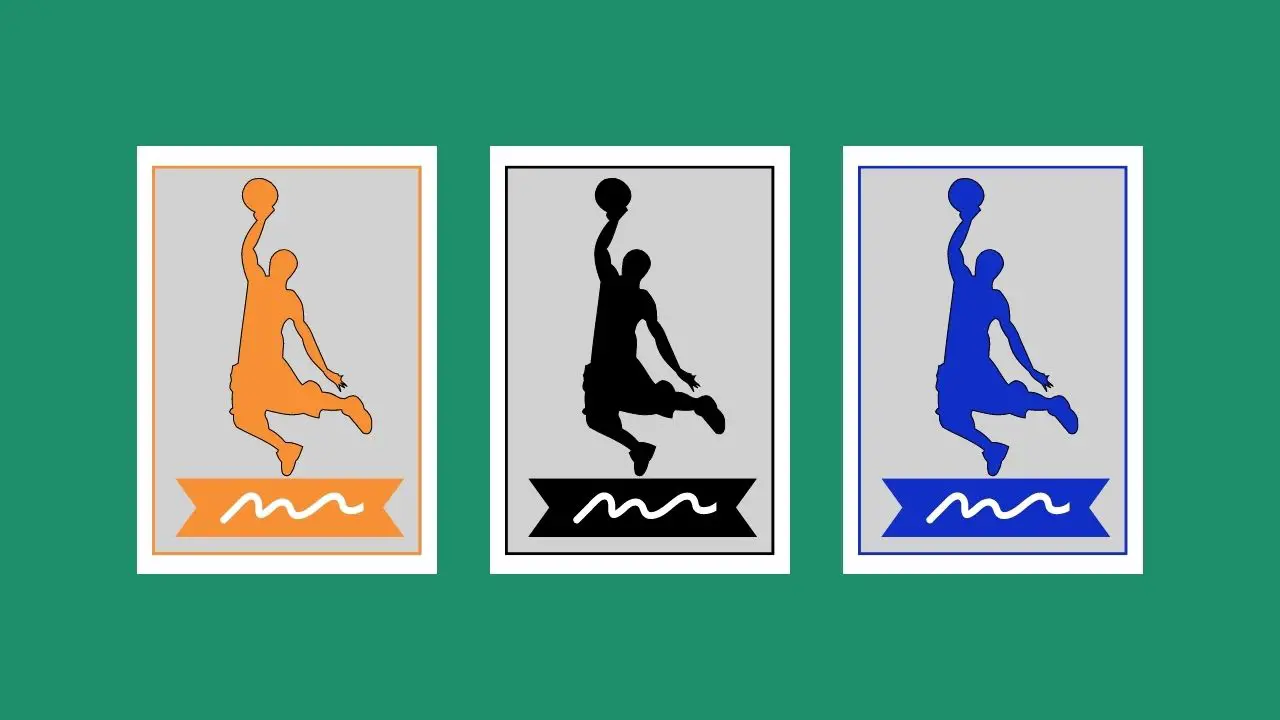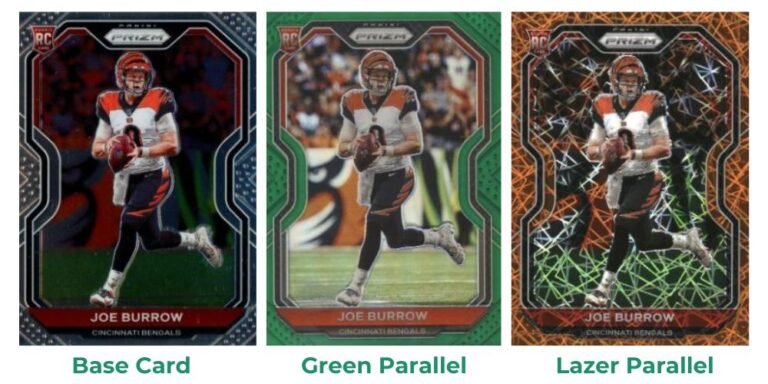
A parallel sports card is a variation or alternative version of a base card, which features the same image and very similar design, with slight differences in color or finish.
I’ve covered everything you need to know about parallel cards, below.
Table of Contents
Parallel Cards: A Background
Sports card collectors, in the sports card hobby today, love scarcity – that’s where the value and collectability tends to be.
We’ve moved on from the days of just base card collecting, and parallels have become hugely prevalent.
They add color and rarity to regular base version of cards, which are usually common and readily available to anyone.
Some parallels offer the best, and most thrilling chase for collectors opening sports card boxes these days – The ‘rainbow’ of cards has become a popular mainstay of the hobby.
A typical modern sports card set will include many different players’ base cards that have the same look and design, and even finish – Often, those base cards will all have their own parallel cards.
The amount of parallels, or the type of parallel, changes depending on the product.
For products like Panini Prizm, collectors are accustomed to seeing a large array of different parallels in sets for every base card, for example.
A parallel card can have different color details and on-card text, or different borders, or added foil and even a different finish, like we’re used to seeing with Panini Prizms, for example.
Some parallel sports cards have a very limited print run, and are assigned a serial number, which is sometimes displayed on the card itself – For example a parallel which is limited to 10 copies in total, the 5th print of that card would display ‘5/10’.
Let’s take a look at the example below from the 2020 Panini Prizm football set:

- The card on the left shows the Joe Burrow base card from the set.
- In the middle, you have the green parallel version, which has a different color border.
- The card on the right is a different parallel, the orange lazer card, which as you can see, has different colors and finish to the card.
How Do You Identify A Parallel Card?
Identifying a parallel card isn’t always easy for someone who’s new to the hobby, especially since the card number, on the back of the card, will be the same as the base card.
So, looking back at the Joe Burrow examples in the section above, all 3 of those cards are #307.
Some parallels are easier to identify than others, because the different features are so easy to spot on some, but not so much on others.
A good first step is to check the design of the base cards from the set; If you’re opening a pack of sports cards, the majority of the cards inside will be standard base cards.
You can also check online; A quick Google search should give you an image of a base card from the desired set in minutes.
Once you know what the base cards look like in terms of design, color scheme, and finish, it’ll become easier to identify a parallel.
You can compare for the differences I’ve mentioned already; So, look for changes in color to details and borders, added foils, and perhaps a shiny finish.
Except for a few products, like Panini Flawless, base cards won’t feature a serial number; So, if you have a card similar to the base, but with a serial number on the front or back, that’s a quick tell for a parallel.
For the unnumbered parallels, it’s a good idea to take a look at a set’s checklist, from a source like Beckett, to get an idea of what parallels exist; That gives you a better chance of identifying one.
Are Parallel Cards Worth More Than Base Cards?
Like anything to do with the value of a sports card, the value of a parallel depends on multiple factors.
Generally speaking, parallels are more valuable than their base card counterparts; Some only a little, and some by huge amounts but, again, that depends on a few things.
The value of a parallel depends on the player that’s featured, the scarcity (low-numbered parallels are naturally worth more), and the popularity of the design – although when comparing the value to a base card, the player featured will be the same for both the base card and parallel, so that factor is irrelevant, in this case.
Parallel cards are considered more collectable than base cards, which is why they’re more valuable.
A couple of good examples of more available parallels, which aren’t low numbered, but are very popular are the Panini Prizm Silver parallels, and the Panini Donruss Optic Holo parallels – collectors generally view them as better and more valuable versions of the base cards.
What Are The Different Types Of Parallel Cards?
There’s a wide range of different sports card parallel types, which vary from product to product.
Some brands are parallel-heavy, with a plethora of different options, and some have very little, if any.
With such a wide range, it’s not possible to go through every single type of sports card parallel here.
However, some of the popular types can include different color details/borders and on-card text than there is on the base card.
There are also parallels with added foils or logos, and parallel cards with a different finish and feel; For example, a shiner look than the base card.
Lower printed parallels can also be numbered, as I’ve already touched on earlier – Some, but not all, parallels can include a serial number on the front or the back, which is particularly popular for the very low-numbered cards.
How Is A Parallel Different From An Insert?
While a parallel is an alternative version of a base card, with the same imagery and numbering system as the main base set, an insert is from a subset of cards which is a standalone from the main set, and has its own numbering system, theme/design, and imagery.
Insert cards can have their own parallels, which are essentially slightly alternative designs to the standard insert card.

